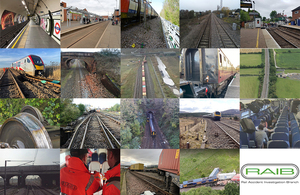The Rail Accident Investigation Branch (RAIB) is today, 17 October 2025, marking 20 years since it began operating, celebrating two decades of independent investigations that have led to significant improvements in the safety of the UK’s railway and tramway networks.
Since becoming operational on 17th October 2005, the RAIB has deployed investigators to the scene of accidents and incidents a total of 777 times.
Key Safety Contributions
The organisation’s work has directly contributed to enhanced safety standards across the industry, generating a wealth of actionable intelligence. Over the last 20 years, the RAIB has:
- Published 427 reports, which have generated 1,891 safety recommendations and 447 learning points.
- Issued 52 urgent safety advice notifications when immediate action was necessary to protect lives.
- Released 138 safety bulletins and digests, highlighting 278 critical safety messages to the industry.
A Poignant Anniversary
Andrew Hall, Chief Inspector of Rail Accidents, noted the significance of the anniversary, particularly in relation to past tragedies.
“Learning from accidents is a fundamental way of improving safety and the railway has a long history of doing so, going back to the 19th century. Today our anniversary feels poignant, as it is also 25 years since the tragic accident at Hatfield, which took the lives of four people and injured 70 more.
“Thankfully over the last 20 years, the railway has become statistically safer. Technological advancements, organisational change and a better understanding of risk have all contributed. Such improvements are no small part due to the structural changes brought about by the Cullen Inquiry and the consequent establishment of the tripartite railway safety structure: RAIB; ORR; and the railway industry, including RSSB.
“RAIB’s role today is the same as it was on day one, to independently investigate accidents to improve railway and tramway safety and inform the industry and the public. After a significant accident or incident, the travelling public must be assured that a thorough and independent investigation will be conducted and that the causes will be published so that everyone can understand what happened and learn the lessons.”
The RAIB’s establishment was a key outcome of the post-Hatfield structural changes, which sought to create a clear separation between accident investigation (RAIB), safety regulation (Office of Rail and Road – ORR), and the industry itself (including the Rail Safety and Standards Board – RSSB).





